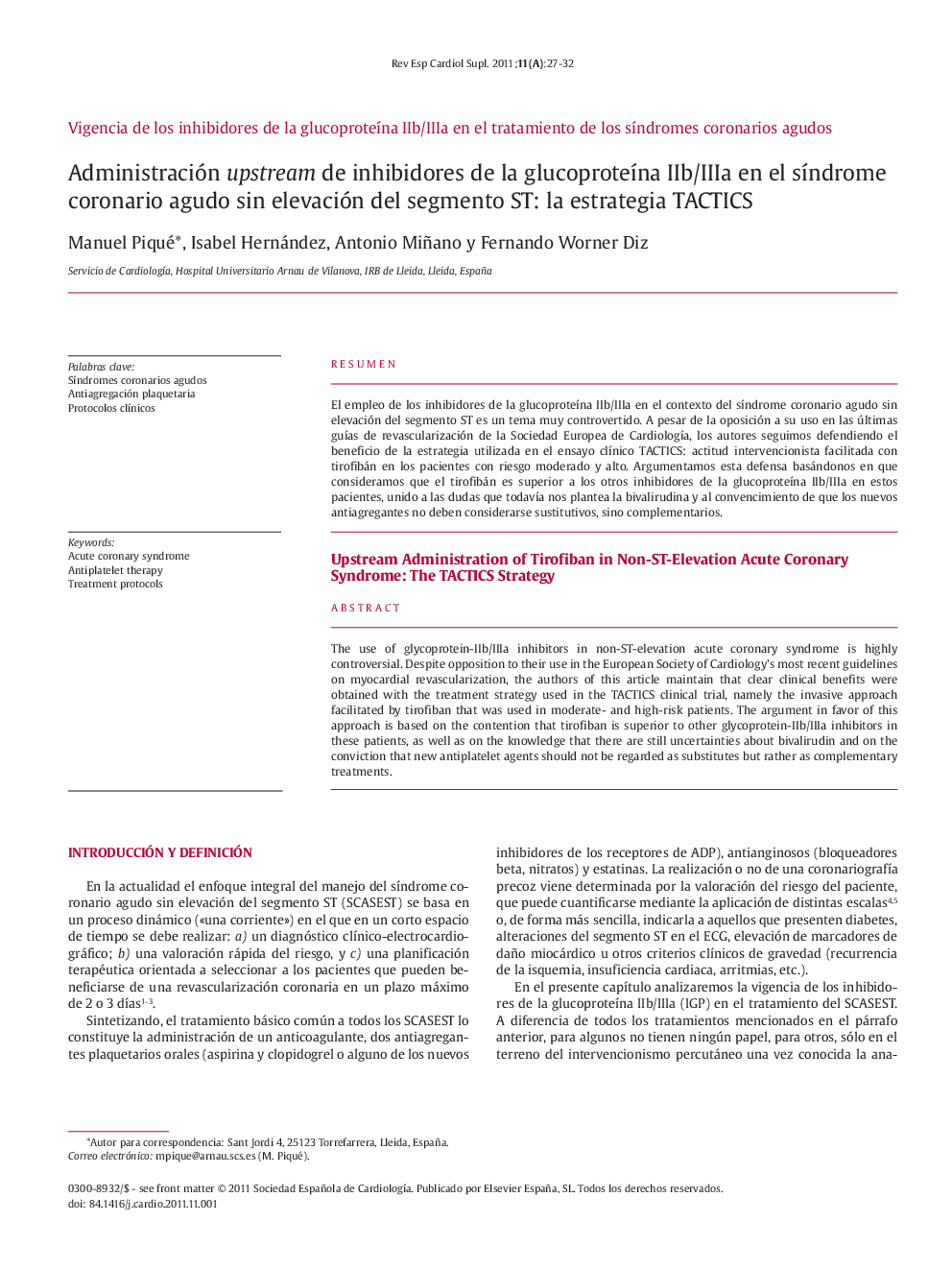| Article ID | Journal | Published Year | Pages | File Type |
|---|---|---|---|---|
| 3019532 | Revista Española de Cardiología Suplementos | 2011 | 6 Pages |
ResumenEl empleo de los inhibidores de la glucoproteína IIb/IIIa en el contexto del síndrome coronario agudo sin elevación del segmento ST es un tema muy controvertido. A pesar de la oposición a su uso en las últimas guías de revascularización de la Sociedad Europea de Cardiología, los autores seguimos defendiendo el beneficio de la estrategia utilizada en el ensayo clínico TACTICS: actitud intervencionista facilitada con tirofibán en los pacientes con riesgo moderado y alto. Argumentamos esta defensa basándonos en que consideramos que el tirofibán es superior a los otros inhibidores de la glucoproteína IIb/IIIa en estos pacientes, unido a las dudas que todavía nos plantea la bivalirudina y al convencimiento de que los nuevos antiagregantes no deben considerarse sustitutivos, sino complementarios.
The use of glycoprotein-IIb/IIIa inhibitors in non-ST-elevation acute coronary syndrome is highly controversial. Despite opposition to their use in the European Society of Cardiology's most recent guidelines on myocardial revascularization, the authors of this article maintain that clear clinical benefits were obtained with the treatment strategy used in the TACTICS clinical trial, namely the invasive approach facilitated by tirofiban that was used in moderate- and high-risk patients. The argument in favor of this approach is based on the contention that tirofiban is superior to other glycoprotein-IIb/IIIa inhibitors in these patients, as well as on the knowledge that there are still uncertainties about bivalirudin and on the conviction that new antiplatelet agents should not be regarded as substitutes but rather as complementary treatments.
